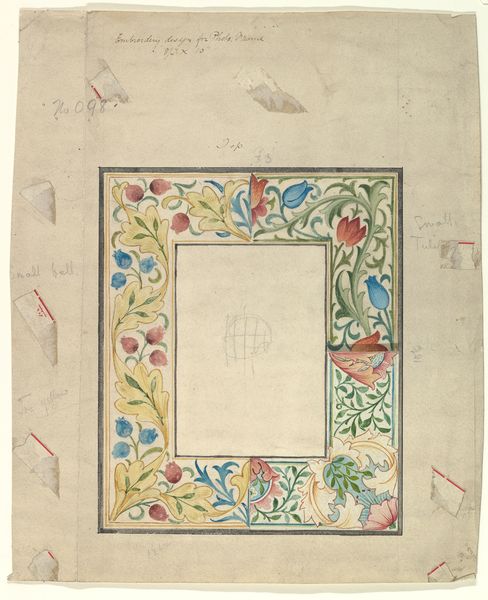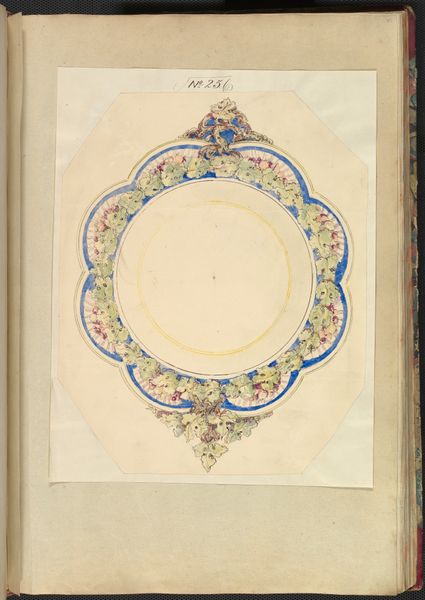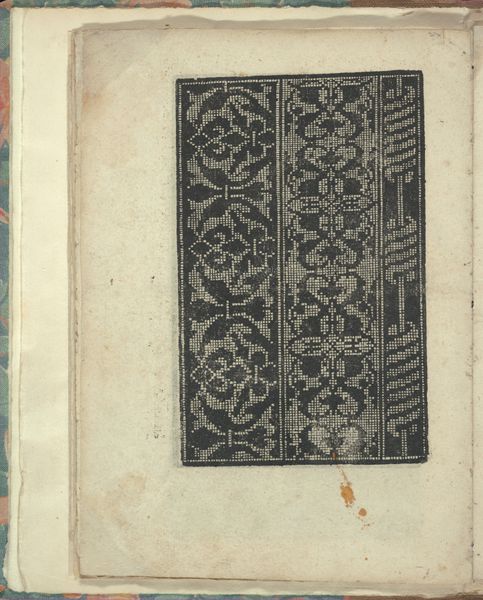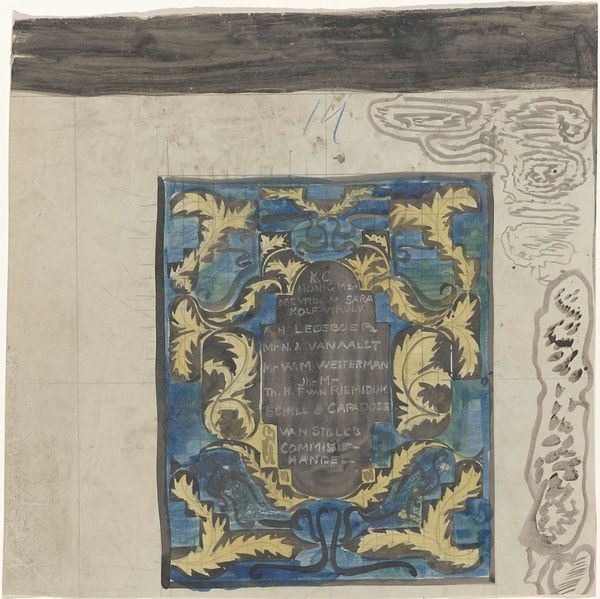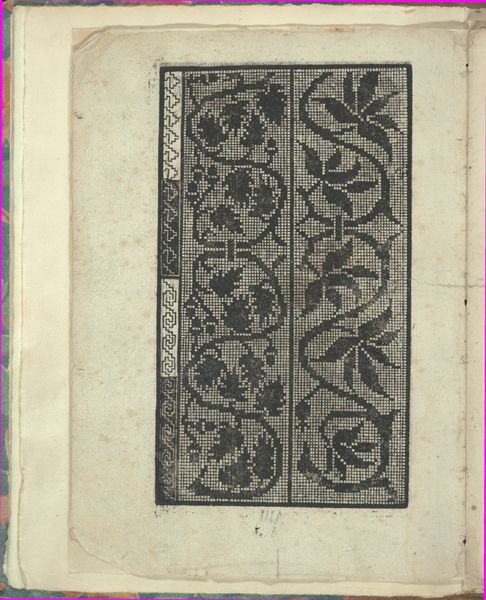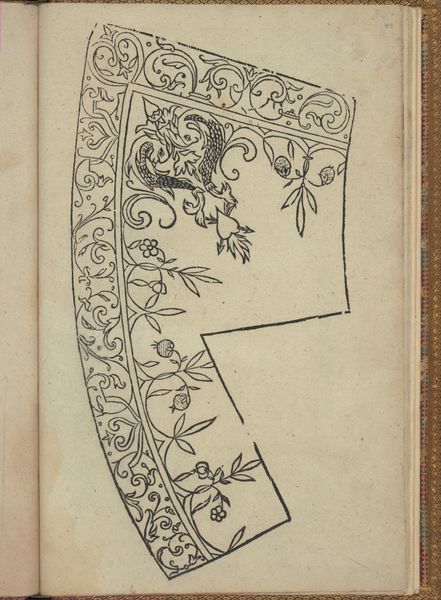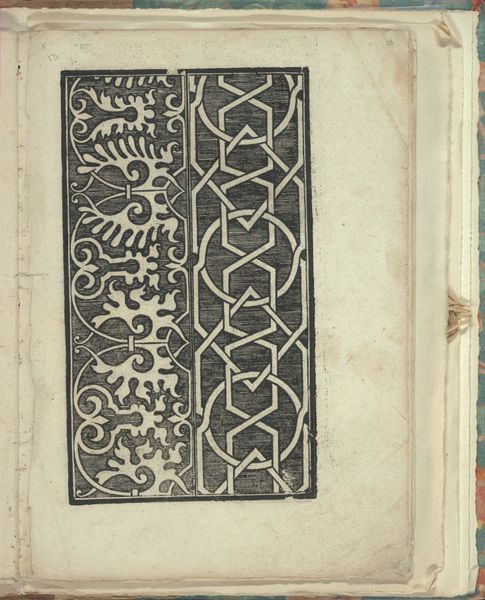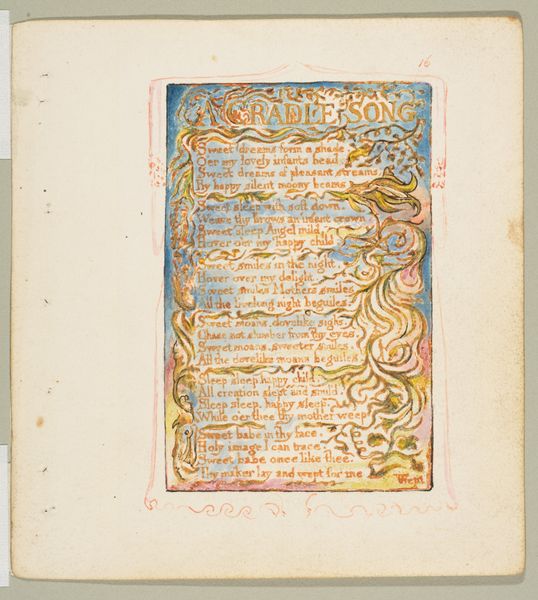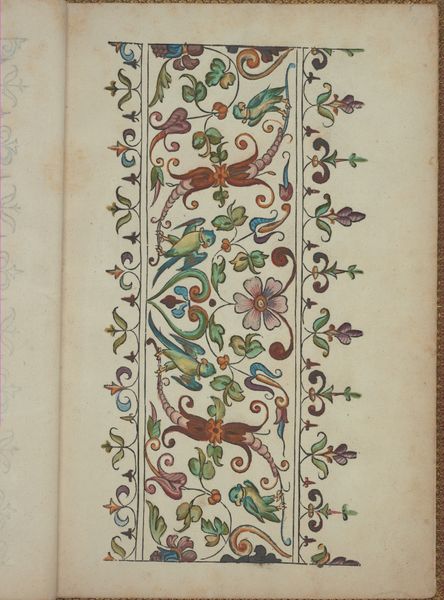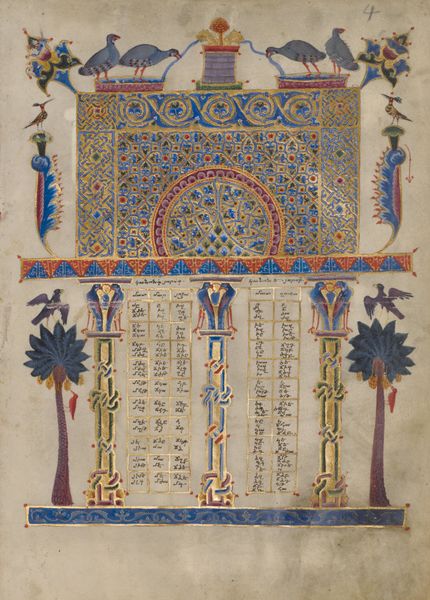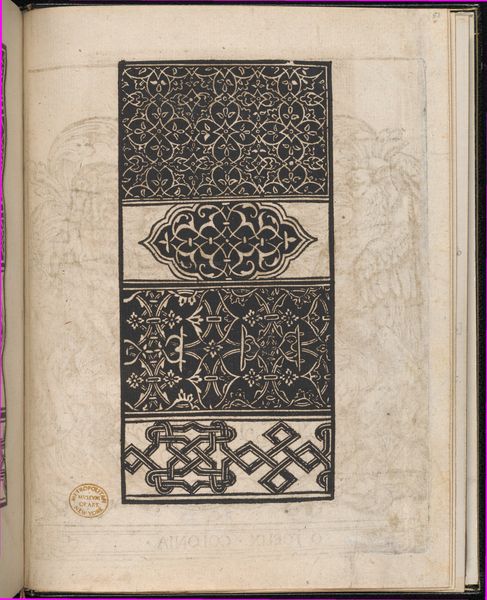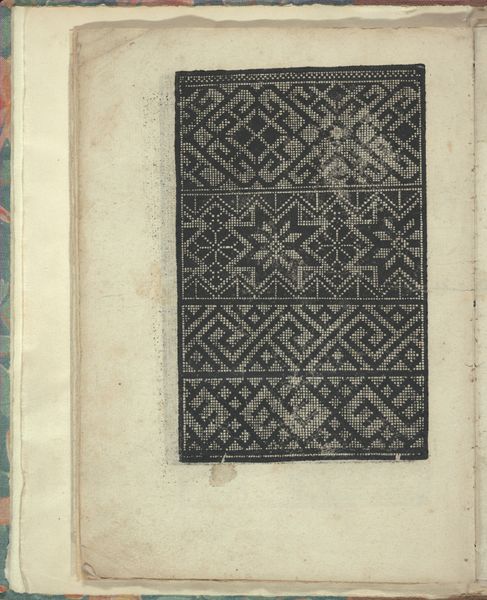
drawing, print, paper, watercolor
#
drawing
# print
#
paper
#
watercolor
#
coloured pencil
#
geometric
#
romanticism
#
decorative-art
Dimensions: sheet: 16 3/4 x 11 7/16 in. (42.5 x 29 cm)
Copyright: Public Domain
Curator: Here we have Alfred Henry Forrester’s "Design for a Two-Handled Platter," likely created between 1845 and 1855. It combines drawing and printmaking techniques, employing watercolor and colored pencil on paper. Editor: My initial reaction is that it appears precious, almost excessively ornamented. The frame dominates; I wonder what the platter itself would have held. It's visually quite busy. Curator: That busyness speaks directly to its function, doesn’t it? Forrester’s decorative arts were meant for production and consumption. What processes and labor were involved in making the real object is vital. I also think that, for whom this piece was commissioned should be asked. Editor: I can’t disagree that it’s made for practical use, of course, and you are spot on about production costs: The linear designs, the chromatic arrangement of blues, yellows, and pinks; the delicate symmetry… Curator: ...suggesting access to specific pigments and print technology unavailable to many. And consider who had access to such commodities – who commissioned, owned, used. The piece reveals consumption patterns of the Victorian upper class, particularly in decorative dining. The print as medium could democratize the designs; more people might access and be informed through art like this. Editor: While I recognize the object’s inherent function within the marketplace, its semiotic function cannot be ignored. Consider the geometric pattern of the central square contained by flowers—each compositional aspect tells something about order. How would that symmetry relate with power? Curator: Very much! Social and political control were often exhibited in designs that signified affluence. However, I'm inclined to look closer at the floral arrangements surrounding this design. What about its use, its distribution across middle-class or wealthier households. We can study the context. Editor: Certainly, but let’s look more deeply at its own formal design and romantic symbolism! Ultimately, a design like this would affect tastes. What were audiences conditioned to want, aesthetically, when repeatedly confronted with visual systems and symbols? Curator: It's an important point. Forrester’s design offers an excellent entry point into discussions about art as labor, commodity, and social statement during the Victorian era, impacting consumer patterns and visual culture in tangible ways. Editor: A beautiful reminder of how something meant for function could shape more than merely one's appetite, offering a reflection on its romantic design that tells its own subtle visual language.
Comments
No comments
Be the first to comment and join the conversation on the ultimate creative platform.
